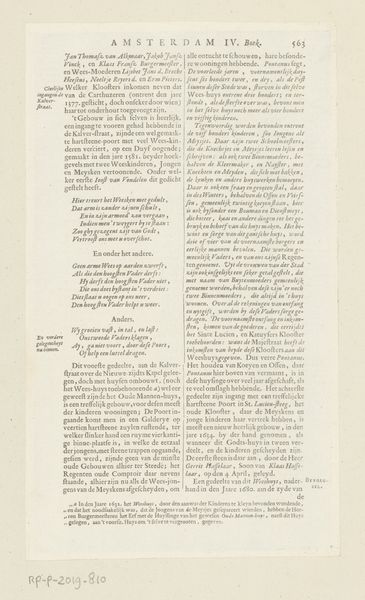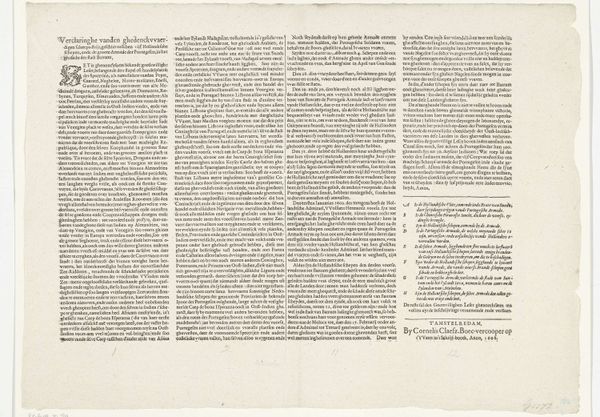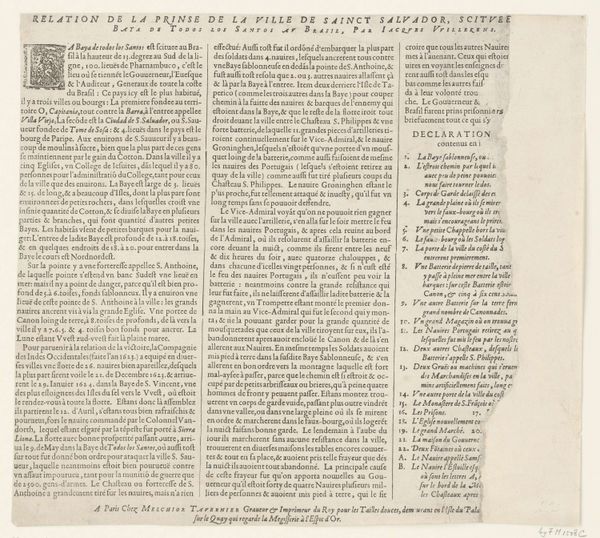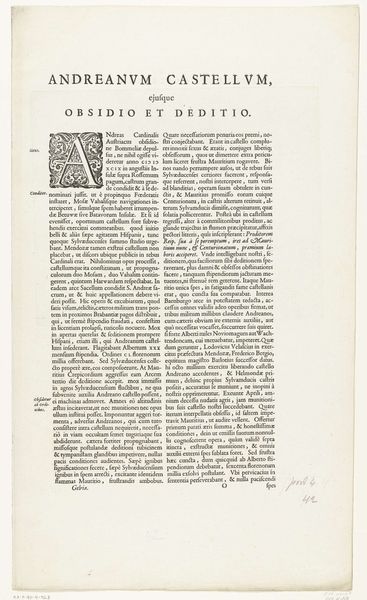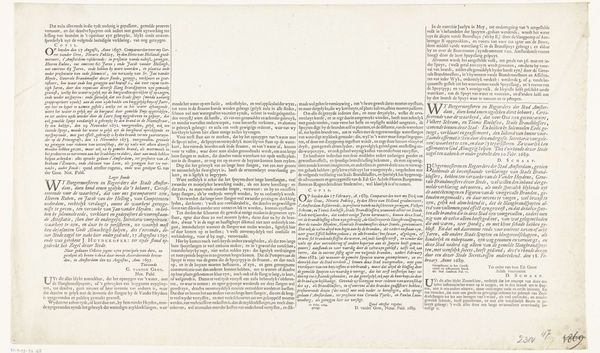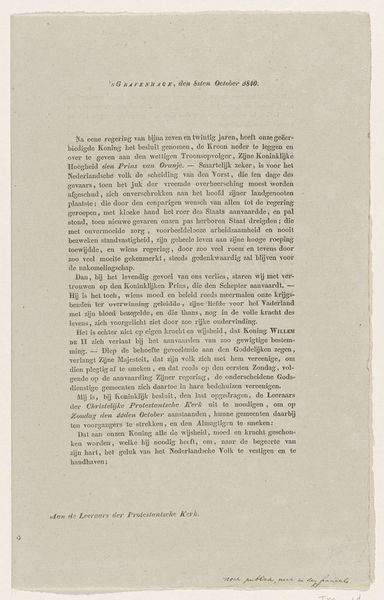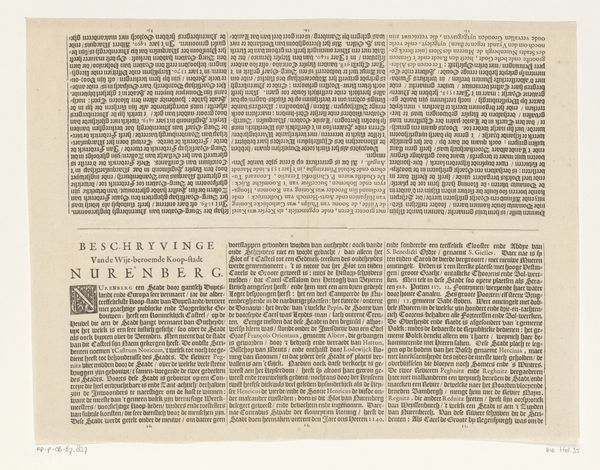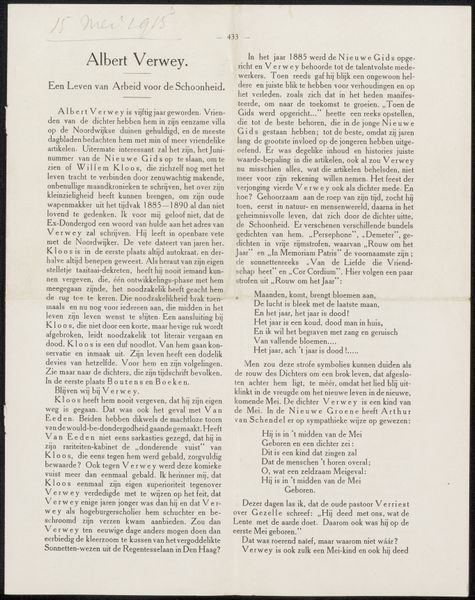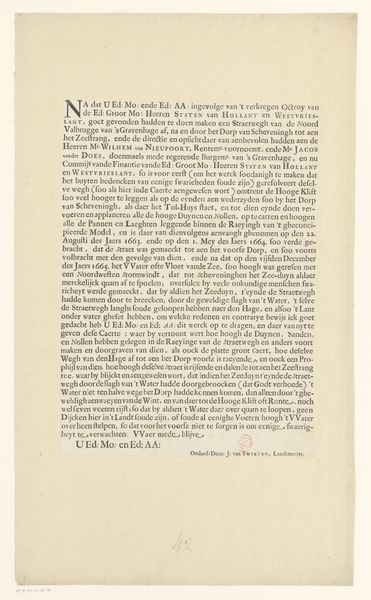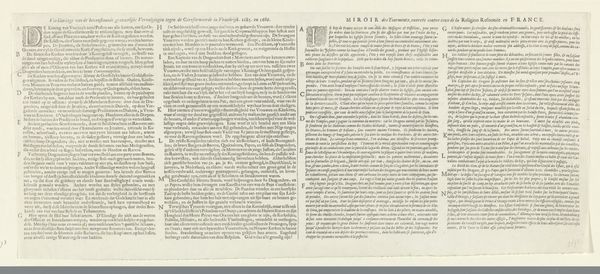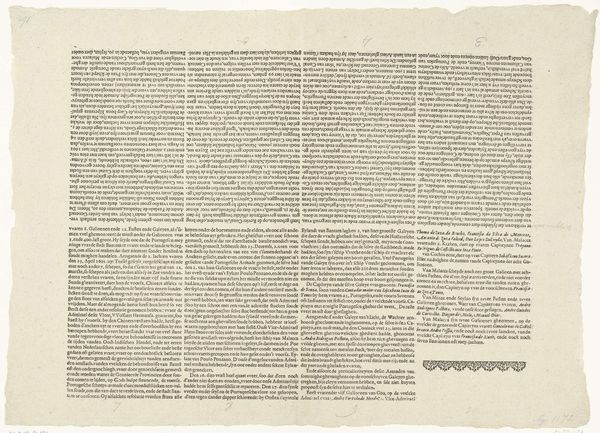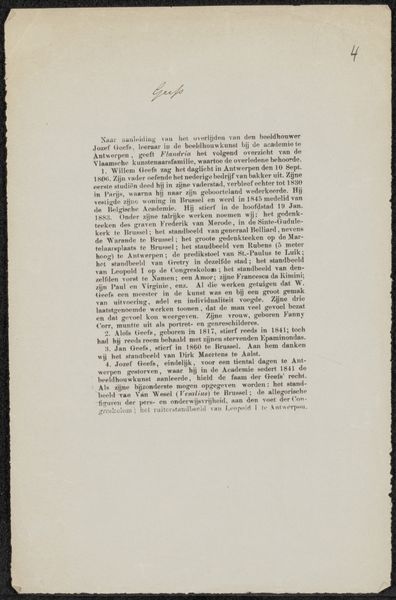
print, textile, paper, engraving
#
dutch-golden-age
# print
#
textile
#
paper
#
history-painting
#
engraving
Dimensions: height 325 mm, width 423 mm
Copyright: Rijks Museum: Open Domain
Editor: This, from 1645, is called "Tekstblad bij het ensemble van het beleg van Hulst." It's an engraving, I believe, and from Claes Jansz. Visscher. The text is really dense. It almost feels more like a historical document than a piece of art. What's your initial impression of this work, viewed through the lens of history and culture? Curator: My initial reaction aligns with yours. It operates as a visual record deeply intertwined with socio-political contexts. This isn’t just a retelling of an event; it's a deliberate shaping of public memory around the siege of Hulst. Editor: Could you elaborate on how it shapes public memory? What specific elements tell us that? Curator: Consider the format—an engraved text, widely reproducible. This inherently positions it for broad dissemination. The Dutch Golden Age witnessed an explosion of such prints, often serving as propaganda or tools for nation-building. Editor: So, it’s less about objective fact and more about influencing public sentiment regarding the siege? Curator: Precisely. Visscher, through this piece, is participating in the construction of a particular narrative—likely one favorable to the Dutch cause, reinforcing a sense of collective identity and shared history. Editor: It's amazing how something that appears so simple can hold so much historical and political weight. I wouldn't have picked that up at first glance. Curator: It highlights the crucial point that art is never created in a vacuum. It reflects and shapes its context, and understanding that context is vital for meaningful interpretation. Editor: Thank you, it offers an interesting perspective when thinking about how society shapes art and vice versa!
Comments
No comments
Be the first to comment and join the conversation on the ultimate creative platform.

